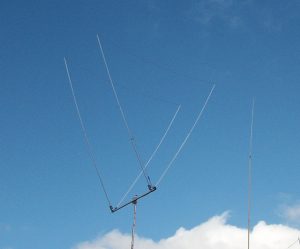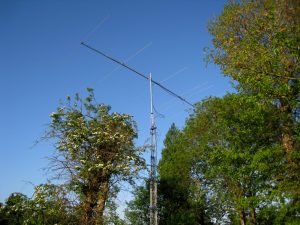FT8 and New Modern Digital Modes
Here’s a ‘marmite’ subject. “Digi-modes”. For starters, they’re not new. Back in the early 90’s, I purchased an AEA PK900 Dual Port TNC from Siskin Electronics which cost a small fortune!

It was a ‘True’ dual-port TNC. Friends from the UK and ‘ex-pat Brits’ [resident in Africa] whom I regularly had a net with, seemed keen to try out what this little box of tricks could do.

I had Port 1 set up on HF [normally 15 or 20m] via my TS850 and a 4 element KLM KT34A. Port 2 was permanently on 2m VHF and you could chat semi-duplex through the ports. In essence a station on 2m VHF Port 2 could call ‘CQ’ and the output would be on Port 1 [HF]. My normal Port 1 output was usually ‘Amtor or Pactor’. Port 2 would be VHF output on 2m FM simplex.
Many local VHF stations around the local area had contacts with stations in ZS, 5Z, 7Q, 9J and others via my VHF>HF cross-band link. Ok it wasn’t fast by today’s modern standards, but it was fun and new.
Very frequently, 5Z4FM [Jim Stewart] in Nairobi, Kenya would call on my ‘HF Pactor’ link on 15m and hook up to local stations on 2m VHF around the Kettering, Northants area.
So – fast forward to 2023. A new digi-mode has hit the scene. Well, it’s been around a few years now and is somewhat controversial in ham radio circles.
FT8/FT4 and other digi-modes have seen a big jump in interest over the last few years. Some ops see it as a lazy way for one station to QSO with another, but FT8/4 and other digi-modes have been very well thought out and these new modes add another weapon for the DX chaser.
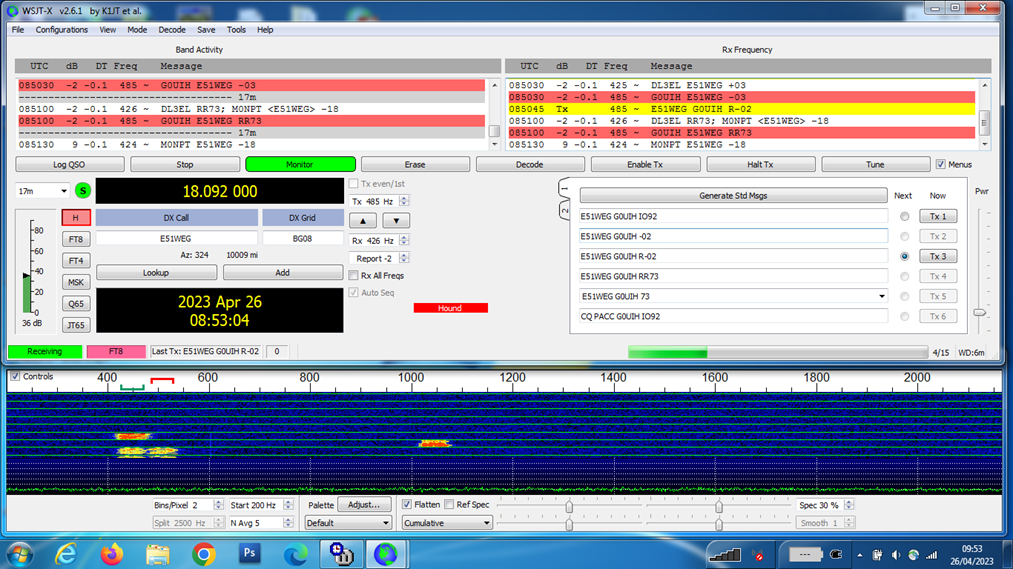
For starters, you don’t need big beam and high power to make a successful FT8 QSO. I was actually pretty late to the party, but as an IOTA chaser, I found that by NOT embracing the new modes, I ended up missing out on QSO’s from island activators that were working solely on the new digital modes [mainly FT8].
It was actually the FT8WW [Crozet Island] activation that eventually sparked me into gear as I missed out watching everyone else work him, getting cheesed off in the process. So, if you can’t beat em’ as they say – ‘Join em!’
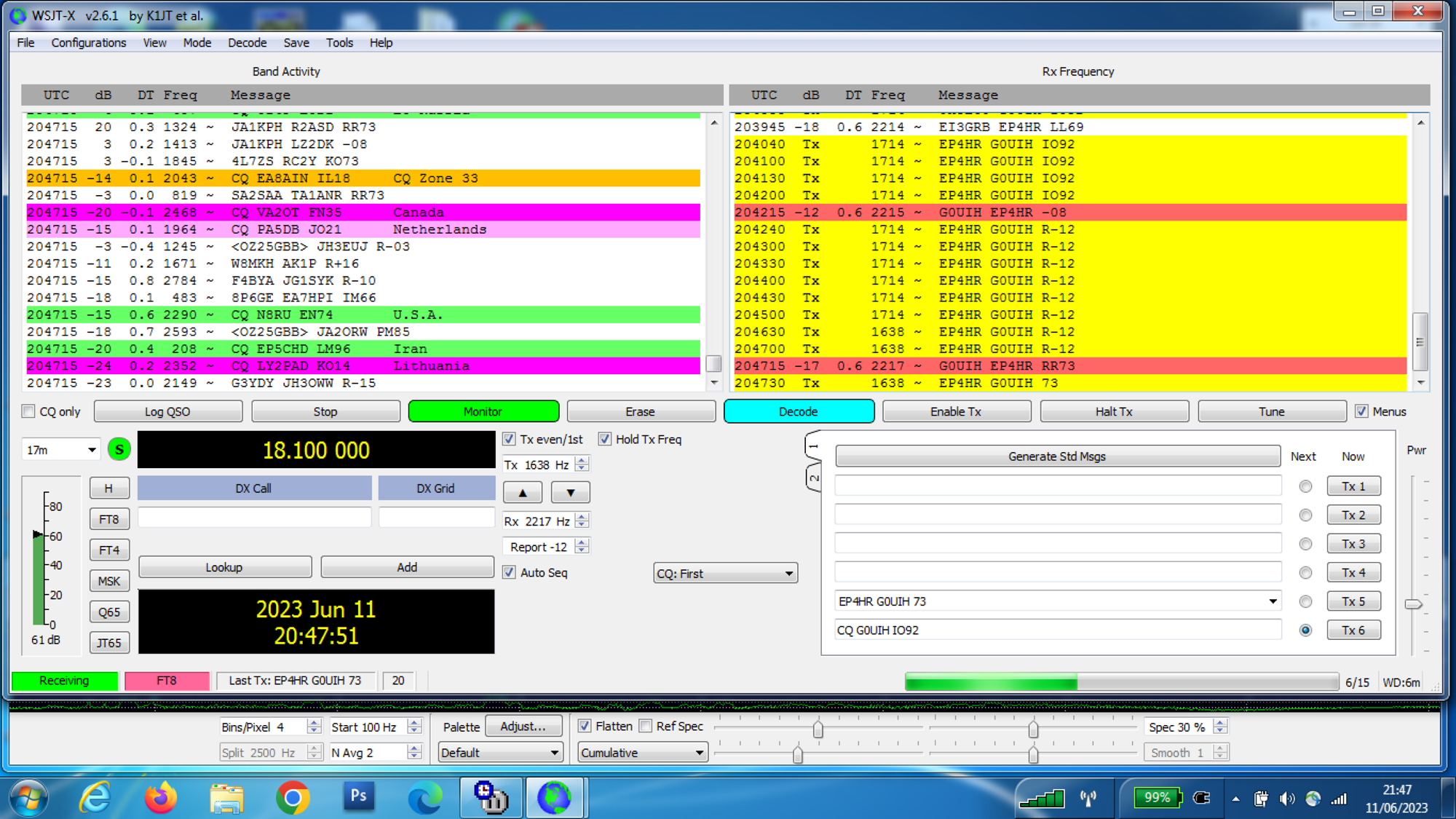
So, I self-taught myself using some great online info from experts such as Gary Hinson ZL2IFB who provides a thorough ‘How-To’ manual and is about the best reference guide around. For newbies, take a look at the guide and have a good in-depth read before going further.
There’s also a heap of YouTube videos including a good intro for beginners here from Ham Radio DX and a set-up guide, which also explain how to get going on FT8.
After a certain amount of experimenting, and not too many failed attempts, I put out my first FT8 Call in early 2023. I was using a pretty old laptop which wasn’t that fast that was hooked up to my Kenwood TS990. Obviously, all antennas were available to use, but with most digital modes it’s not about power as they are generally WSPR [Weak Signal Propagation] modes so you don’t need kilowatts of power.
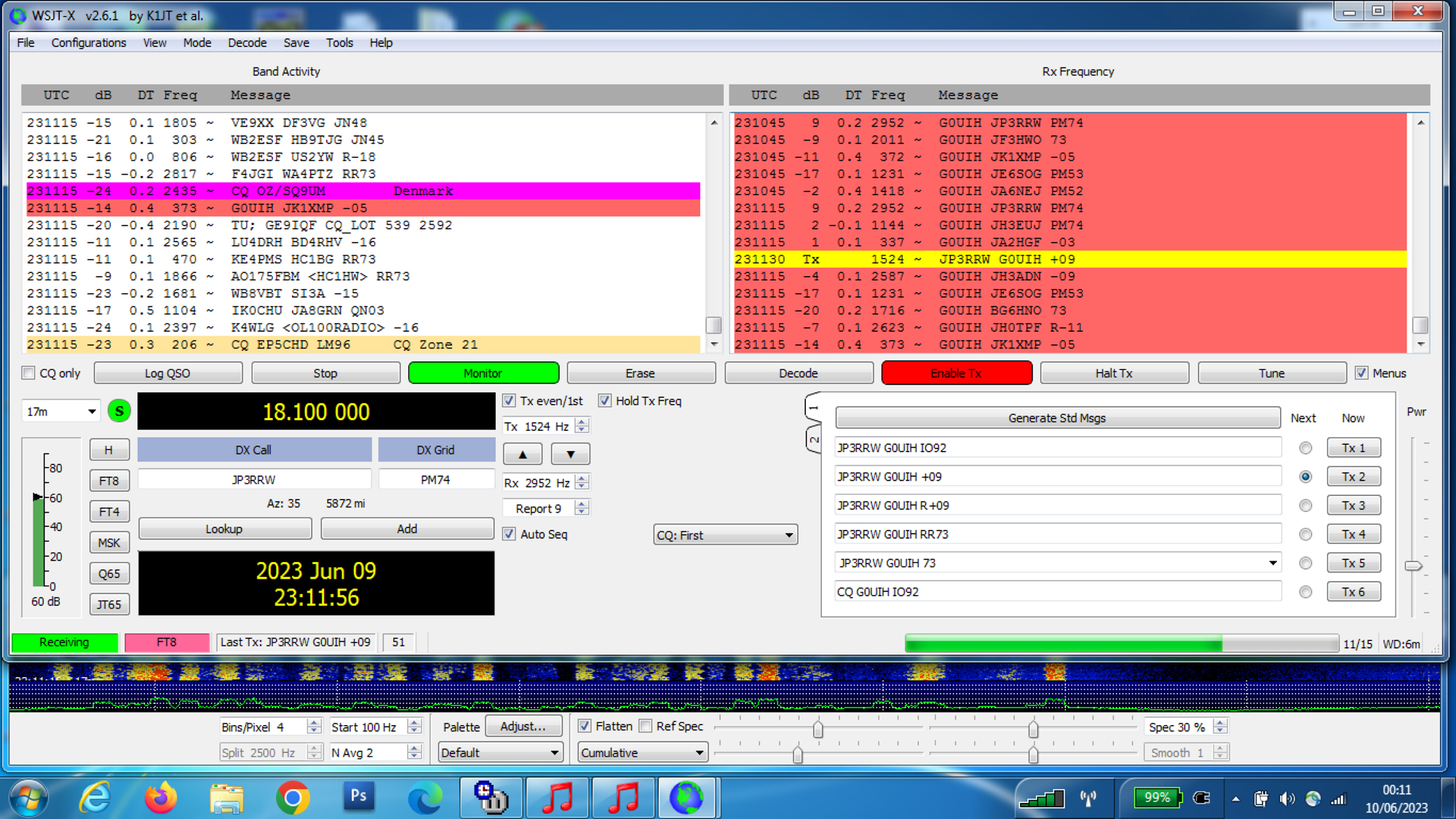
I found myself using between 10 and 100w [normally about 50w but rarely more and never the amplifier] and over the first few weeks of FT8 found myself easily working some pretty rare locations.
It was quite satisfying to know that I had the system set up [even with a poor old antiquated laptop] and stations were [frequently] returning to my calls. I found working DX-peditions was a lot less stressful than the constant yelling on phone or keying on CW trying to bust a pile up.
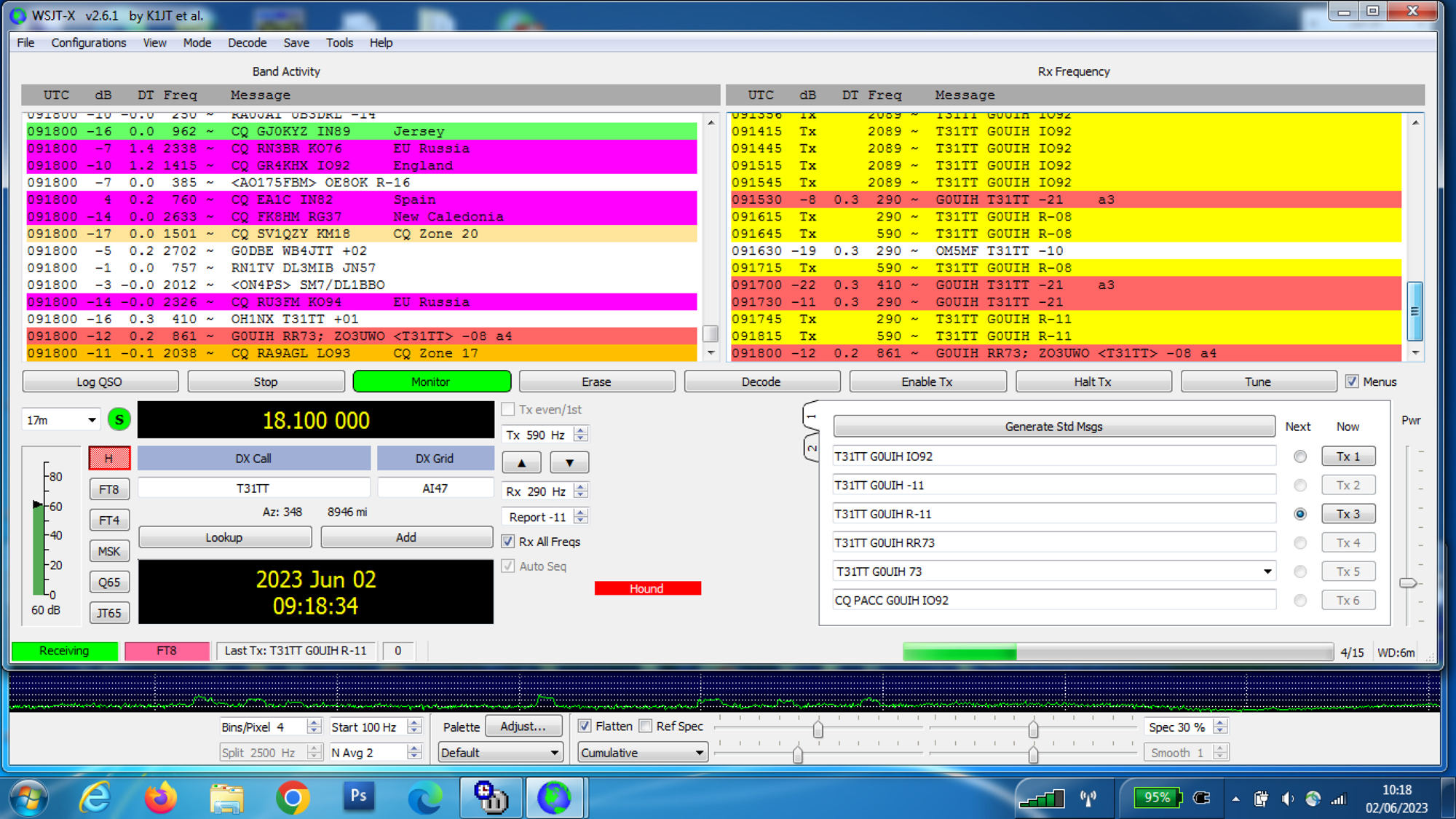
What is very apparent here is that these modern modes are extremely useful for operator’s who don’t have the luxury of big beams and larger amplifiers. You don’t need QRO on FT8. As a test, I hooked up a simple 20m full size wire dipole at 30 feet and various other temporary dipoles at 25 feet around the garden – rather than operating from my normal 3 and 4 element full size monobanders. I just wanted to find out how good FT8 for a modest station was and I wasn’t disappointed.
In the first week of operating and without really trying, I worked 180 countries. Some were [and are still] considered rare, including T31 [Central Kiribati], FK [New Caledonia], 5W [Western Samoa], VP6 [Ducie Island], VU7 [Lakshadsweep Islands] to name a few.
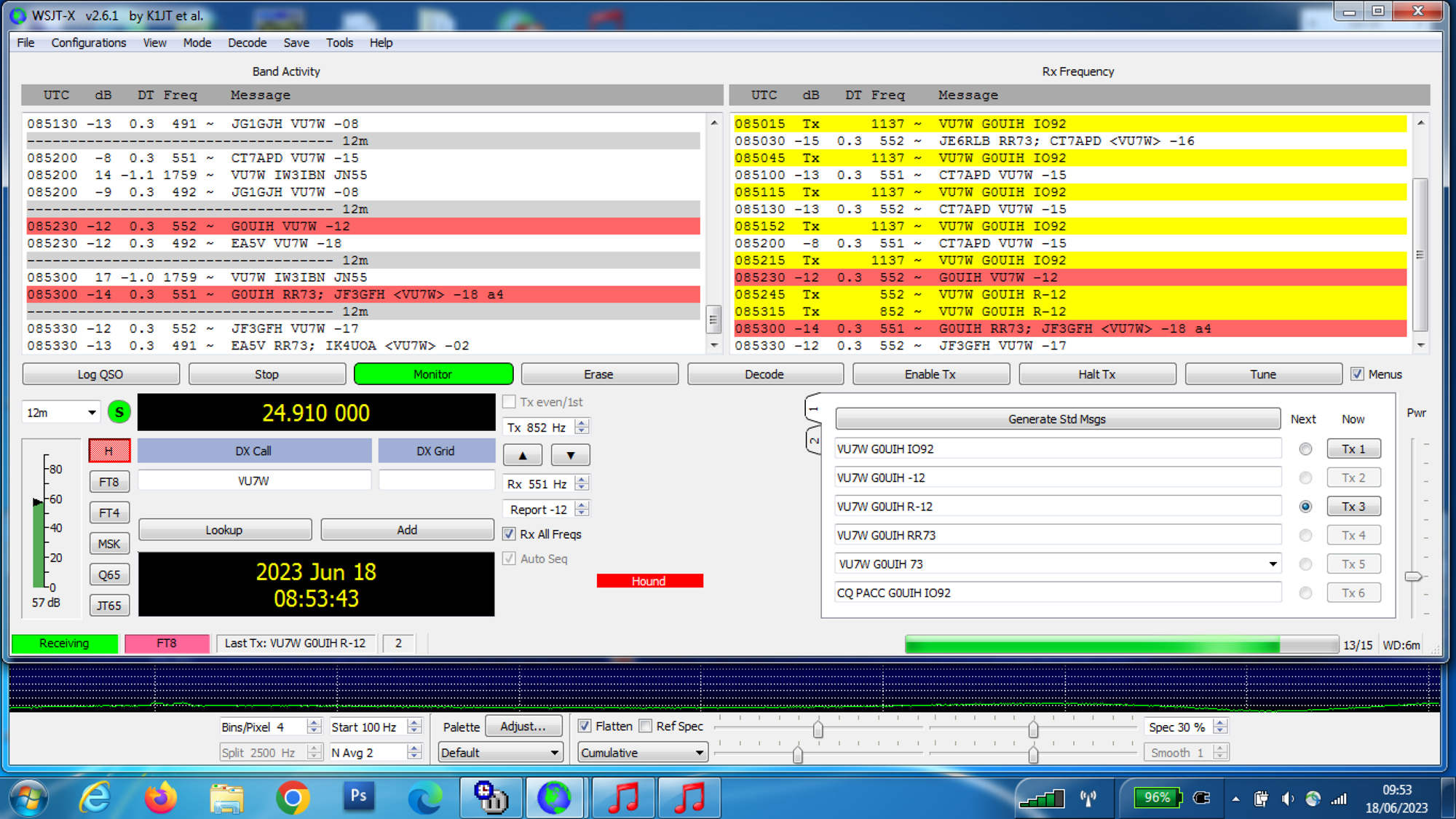
There was no real hanging around in the pile-ups as most DX-peditions were working FT F/H [Fox/Hound mode]. Normally a reply to my call would happen within a few minutes – so pretty well hassle free and all with ‘Radio Power’ and with a modest dipole antenna.
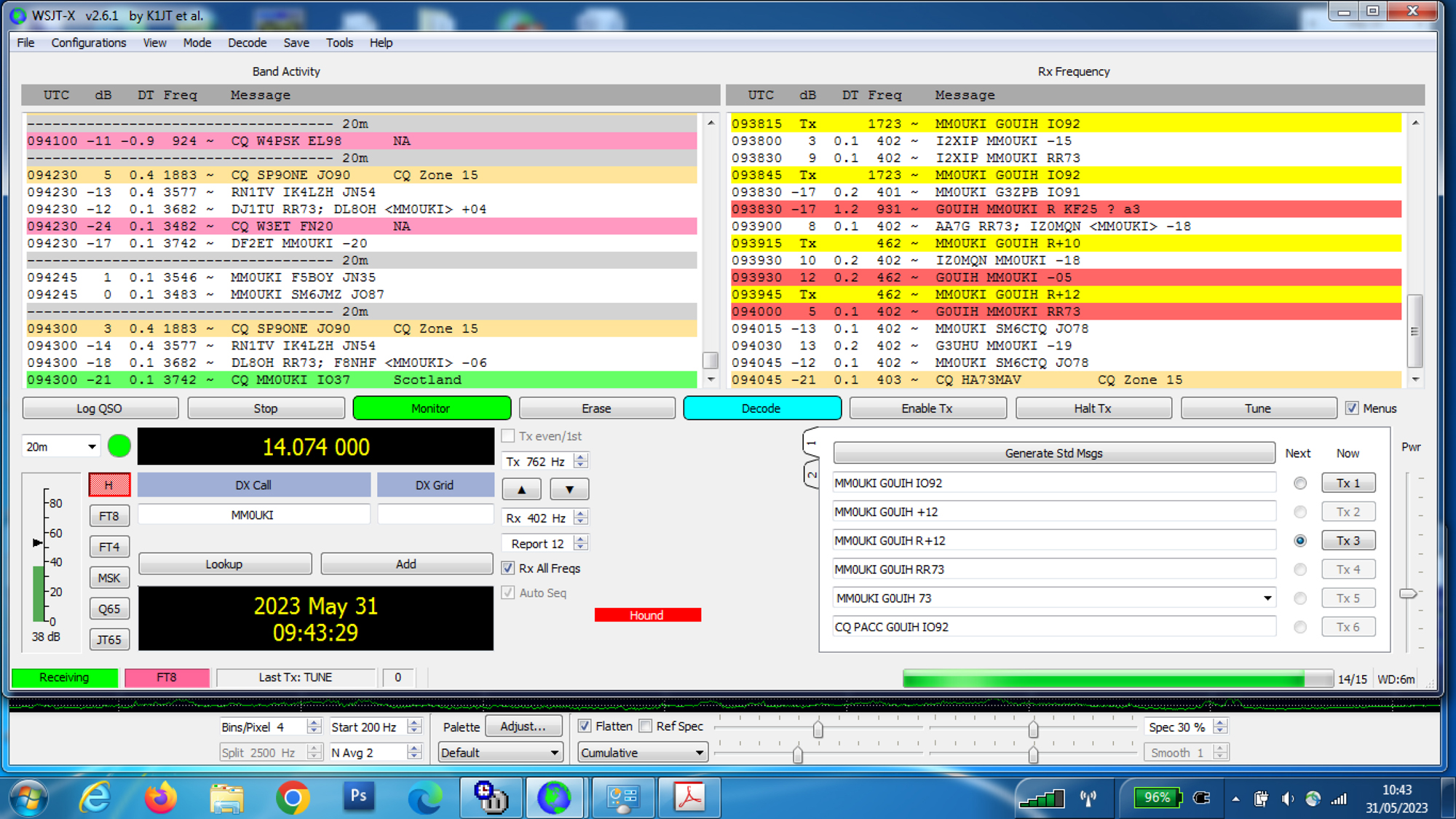
Some say that FT8 is killing ham radio. I disagree, as FT8 and other digi-modes open up new windows for working those rare ones which otherwise would be missed and for the reasons below.
- FT8 signals are workable far below the standard SSB/CW thresholds – sometimes down as low as minus 26db. So what can appear to be a dead band – actually isn’t. You won’t hear the very low signals, but the software will.
- FT8 DX-peditions tend to work ‘Fox/Hounds’ [Often called DX-pedition mode] and the ‘Fox’ [the ‘DX’], can work up to 5 stations at a time. This gives you [as the chasing hound] a much better chance of getting in the log.
- FT8 QSO’s can be accomplished with low power and modest antennas. All screen grab QSO’s here were completed with simple wire dipoles [below 30 feet of height] and under 100w output. Most were only 40w and some only 10w.
- On FT8 there are no ‘Big Guns’ – a minus 20db signal is just as easily worked as is a +10db signal so it’s a WSPR [Weak Signal] mode rather than a low-power mode. Saying that, most ops tend to use 100w or less.
- FT8 is a very narrow-band mode. You can still have space in the spectrum to work even if there’s 20 other stations on the same fundamental frequency.
- FT8 is great on the low bands. On 80 and 160 where normally you’d need QRO, you’ll be surprised what you can work with just a 100w and a wire.
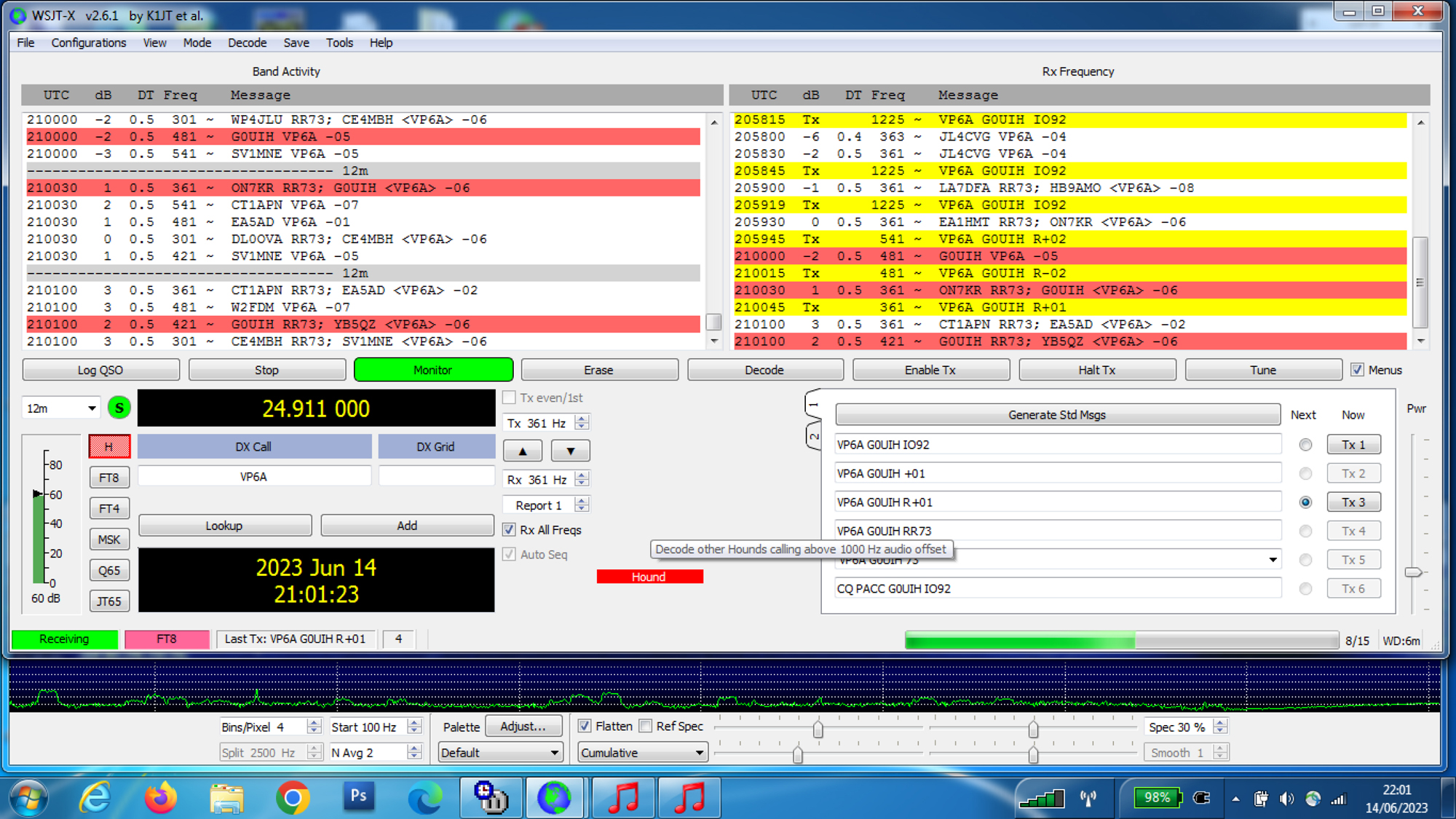
To wrap it up….
Some say FT8 is lazy and requires no user input or skill. I actually found out quite quickly that you need to be quite astute in picking your transmit frequency to avoid other callers, especially if you are chasing a DX-pedition using ‘Fox/Hounds’ mode.
You just can’t transmit anywhere you like. Some thinking [on the part of the ‘Hound’] is needed and you need to regularly check that your ‘TX’ frequency hasn’t been hijacked by another op – as calling on top of each just doesn’t work.
Here’s a good guide to FT8 F/H operating.
Good luck in the pile-up!
73 – Steve G0UIH

